How to Care for Your Fabric Stash
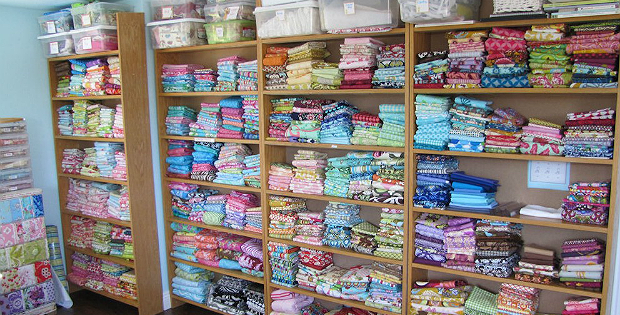
Keep Colors Bright and Fabric Fresh for Years!
Have you ever had to toss out fabric because it had deteriorated or been damaged before you could use it? Fabric will stay beautiful and usable for many years, but only if properly cared for.
It goes without saying that you don’t want to make a quilt from fabric that has even possibly been damaged while in storage. Here are some tips to prevent problems.
The first step is to make sure that fabric is clean and dry before adding it to your stash. Do not store fabric that has been starched, as that will draw critters (sizing is OK though, so you don’t need to pre-wash if you don’t want to). Spills and stains will be much harder to remove over time so make sure fabric is pristine before being stored.
The three biggest enemies of fabric are:
- sunlight or other strong light
- moisture
- critters
Sunlight will fade and weaken fabric over time. Strong indoor lights can as well. Store your fabric in a dark place, or at least away from strong light. Think about how curtains fade over time, even those on north-facing windows that don’t get direct sunlight. Your fabric stash will fade, too, if exposed for long periods of time to strong light.
Moisture can cause mildew, mold, odors and stains that are hard to remove, and can cause fabric to break down. A damp basement and other areas with high humidity are no-nos for fabric storage. Large temperature extremes, such as in attics and garages, are a problem too, so store your fabric in an environment without excess heat or humidity.
Critters, whether they be insects or rodents, can cause a great deal of damage to fabric. Moths, silverfish, and mice are perhaps the biggest enemies of fabric, but other insects can be too. Once insects get into your stash it’s hard to get rid of them so prevention is best.
Taking those things into account, it seems like the best way to store fabric is in airtight containers that will keep moisture and critters out … like plastic. However, fabric needs to breathe in order to stay fresh and unspoiled.
Many quilters do store their fabric in plastic and don’t have any problems. The secret is to open up the containers every now and then, shuffle through the fabric a bit, and let fresh air in. In other words, let the fabric air out for a while before closing it back up.
Just be sure to choose containers that don’t give off plastic or chemical odors, as fabric absorbs and hangs on to odors very easily. Those odors come from chemicals that are being released, which can cause fabric to degrade. Polyethylene is a stable plastic that does not release gases. Semi-opaque polyethylene containers are an excellent choice for longer-term storage.
Paper or cardboard boxes are another option but present their own issues. The acid in paper (from wood pulp) can cause fabric to deteriorate over time. That’s why conservators recommend wrapping quilts in acid-free tissue paper or clean fabric before storing them in archival acid-free boxes.
The acid in wood causes fabric to deteriorate. If your fabric is on unsealed wooden shelves, be sure to rotate pieces from the bottom to the top every so often. It’s better still to put a layer of fabric or archival paper between the wooden shelf and fabric.
While moisture and critters can cause problems in a short period of time, it takes longer for light to fade fabric (several months to a few years, depending on the fabric, dyes, and the strength of the light).
Plastic can out-gas and cause problems within a few days (odors) or a few years (fabric deterioration). Problems with paper and wood take longer to develop – sometimes decades.
Choose your storage containers depending on how long you expect to keep fabric in your stash before using it. In fact, it would be a good idea to keep track of when you acquire batches of fabric so you know how long they’ve been stored. And don’t forget to air and rotate your fabric once or twice a year.
One solution you might consider are fabric storage boxes. They’re sturdy and the windows in front allow you to see what’s inside. They also allow fabric to breathe while remaining dust and critter-free. Plus they’re available in many shapes and sizes. Learn more here at Amazon.
The following sources provide additional information about storing fabric:
Storing Fabric Tips: How to Avoid Pesky Pests During Long-Term Storage – Craftsy
Storing Linens – Martha Stewart (This applies to quilting cotton and quilts, too.)
Storing Quilts and Fabric – Victoria White
The Art of Choosing: Fabric Stash Storage Ideas – In Color Order (Short-term storage ideas.)
Image Source: The image at the top of the page is from Sew Fun by Monique.






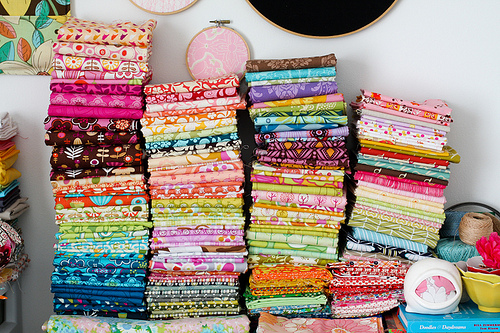
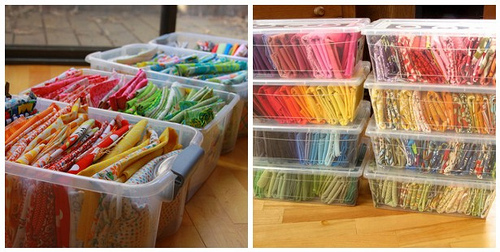
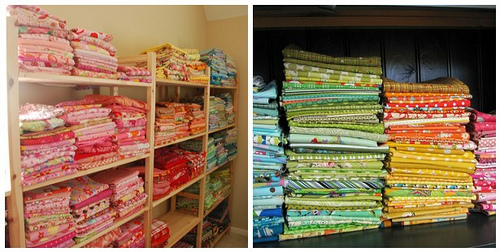
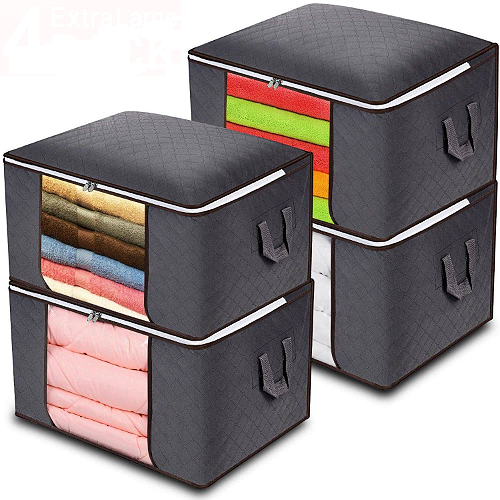






Your article shows pictures of folded fabric on open shelves. I store mine on open shelves, but find that the outside edges are fading. I hope that others reading this good article will not follow the pictures thinking that open shelves are ok
Thanks for the tip.